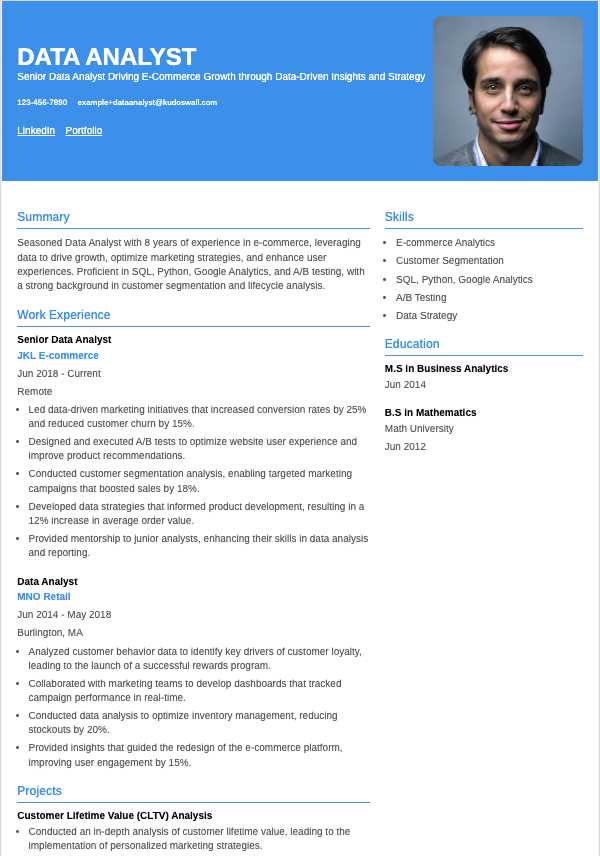General Tips - How to Make a Resume for a Job
Building a professional resume is an essential step toward landing your desired job. Whether you’re a fresher, experienced professional, or switching careers, creating a resume that stands out can be challenging. In this guide, we’ll explain how to make a resume for a job, tailored for different scenarios, and introduce you to the benefits of using KudosWall’s AI Resume Builder for a streamlined experience.
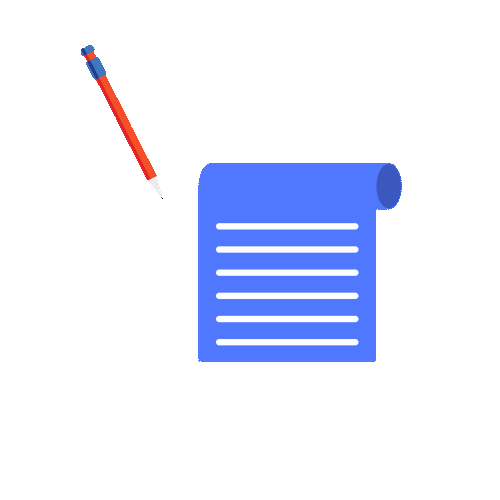
1. Understand the Purpose of Your Resume
A resume is your first impression to potential employers. It should effectively communicate your skills, experience, and suitability for the role. Here are the main elements you need to include:
- Contact Information: Include your full name, phone number, email address, and LinkedIn profile.
- Professional Summary or Objective: A concise statement that summarizes who you are, what you offer, and your career goals.
- Work Experience: List your previous jobs, responsibilities, and achievements. Include measurable results if possible.
- Education: Mention your academic qualifications and any relevant certifications.
- Skills: Highlight key skills relevant to the job you're applying for.
- Additional Sections: Awards, volunteer work, or relevant projects can help you stand out.
2. Analyze the Job Description
When building a resume, it's essential to analyze the job description carefully. This will help you understand what the employer is looking for and allow you to tailor your resume accordingly:
- Identify Required Skills and Experience: Highlight specific skills, qualifications, and experiences mentioned in the job description. Ensure these are visible on your resume.
- Use Relevant Keywords: Include keywords from the job description to make sure your resume aligns with what recruiters are searching for. This increases your chances of passing ATS filters.
- Understand the Job Role: Clearly understand the responsibilities and expectations of the role, so you can demonstrate how your background aligns.
3. Optimize for ATS Resume Score
Applicant Tracking Systems (ATS) are software tools used by companies to filter and rank resumes based on their relevance to the job. To improve your ATS Resume Score, consider the following:
- Use Job-Specific Keywords: Make sure your resume includes important keywords and phrases from the job description. This helps your resume get through the ATS filters.
- Follow a Standard Layout: Use a simple, clean format. Avoid graphics or complex formatting that might confuse ATS software.
- Optimize Section Headings: Use standard headings like "Work Experience," "Education," and "Skills." This helps ATS software easily identify key sections of your resume.
- Use KudosWall’s ATS Score Feature: Our AI Resume Builder can analyze your resume’s ATS score and suggest improvements to help you get more interviews.
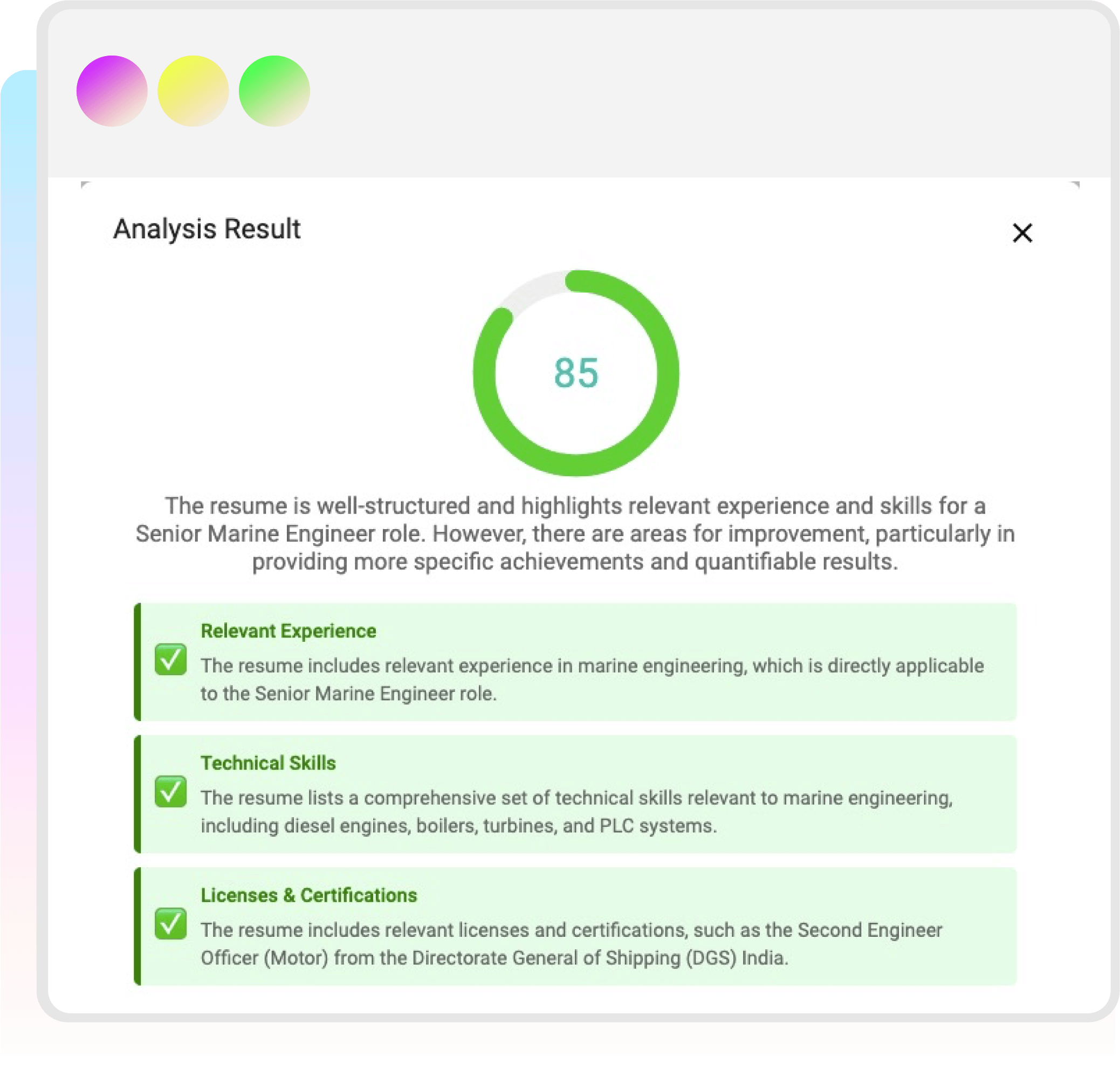
4. Leverage Action Verbs
Action verbs make your resume more dynamic and engaging. They help you describe your responsibilities and achievements clearly and concisely. Use powerful action verbs like:
- Managed: Led a team or project successfully.
- Developed: Created or improved a system, process, or product.
- Implemented: Executed a new strategy, plan, or system.
- Increased: Boosted sales, productivity, or efficiency.
- Reduced: Cut down costs, time, or errors.
5. Highlight Relevant Keywords
Using the right keywords in your resume is critical, especially if you're applying through online job boards. Here’s how to identify and use keywords effectively:
- Research Job Postings: Look at multiple job postings for similar roles and identify common keywords used by employers.
- Include Core Skills: Ensure you include core skills that are frequently required for the job. For example, "project management," "data analysis," or "customer service."
- Incorporate Technical Terms: If you have specific technical skills (like software, programming languages, or industry-specific tools), make sure to include those.
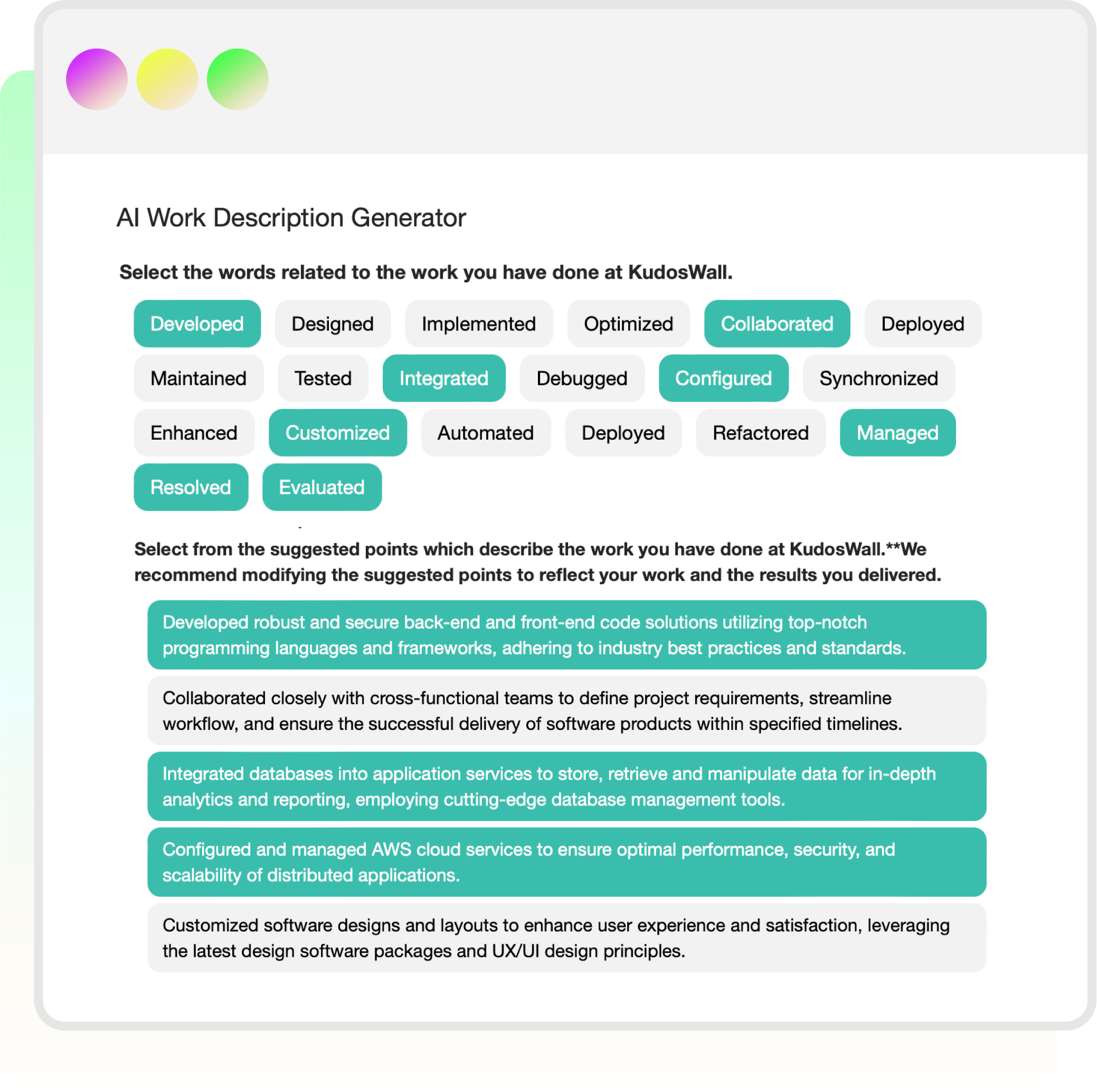
6. Use KudosWall’s AI Features to Enhance Your Existing Resume
KudosWall’s AI Resume Builder can help streamline the process of building an effective resume:
- Analyze Job Descriptions: Our AI helps you extract key skills and keywords from the job description and suggests how to incorporate them into your resume.
- ATS Score Optimization: Get real-time feedback on how your resume scores against ATS standards and tips to improve your score.
- Keyword Suggestions: AI analyzes your content and suggests keywords that can make your resume more relevant to the job you’re targeting.
- Action Verbs Library: Access a library of action verbs to make your resume more dynamic and impactful.
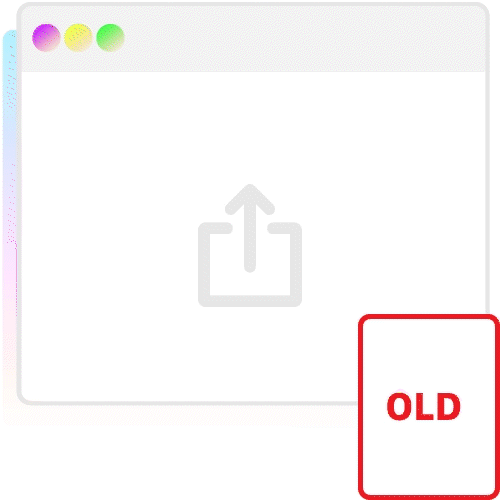
7. How to Make a Resume for Freshers
If you're a fresher, focus on your educational background, internships, projects, and any part-time work experience that is relevant to the job. List skills that you’ve developed during your studies or through extracurricular activities. Consider the following tips:
- Highlight Education First: Since you may not have much work experience, make sure your education is prominent on your resume. Include your degree, major, university, and graduation year.
- Include Internships and Projects: If you have any internship experience or projects, list them as work experience. Mention specific skills or knowledge gained from these activities.
- Focus on Skills: Highlight technical or soft skills you developed during your studies. Skills like communication, problem-solving, or proficiency in software can be valuable for entry-level positions.
- Use Action Verbs: Even for limited experience, use dynamic action verbs to describe your roles in projects or internships, such as "assisted," "designed," or "coordinated."
KudosWall’s AI Resume Builder can help streamline the process of building an effective resume:
8. How to Write a Resume for Experienced Professionals
Experienced professionals should emphasize their career progression, significant achievements, and specialized skills. Tailor your resume for the specific job, highlighting your most relevant experiences first:
- Showcase Career Growth: Demonstrate how you’ve grown in your career by showing your progression through different job roles and responsibilities.
- Focus on Achievements: Highlight your accomplishments by showing measurable outcomes (e.g., "increased sales by 30%," "improved process efficiency by 20%").
- Highlight Specialized Skills: Experienced professionals often have niche skills that set them apart. Make sure these are clear on your resume.
- Match the Job Description: Tailor your resume to match keywords from the job description, which increases your chances of passing ATS.
9. How to Make a Resume for Career Switchers
Career switchers need to focus on transferable skills. Emphasize how your previous experience relates to the new industry and showcase relevant skills, training, and certifications that make you a strong candidate:
- Focus on Transferable Skills: Highlight skills that are valuable across multiple industries, such as leadership, project management, or customer service.
- Emphasize Relevant Training: If you have completed any courses, certifications, or workshops that relate to the new career, include these in a dedicated section.
- Reframe Your Experience: Adjust the way you present your past experiences to show how they apply to your new field. For example, managing a team in retail can demonstrate leadership and organizational skills in another industry.
10. How to Make a Resume for Executives
Executives should highlight leadership roles, strategic accomplishments, and high-impact results. Focus on achievements that demonstrate your ability to lead teams, manage budgets, and drive organizational growth:
- Highlight Strategic Achievements: Show how you’ve driven company success through strategic initiatives (e.g., "led a successful product launch," "implemented cost-saving strategies").
- Show Leadership Skills: Highlight your experience in leading teams, departments, or projects. Use metrics to demonstrate the size of teams or projects managed.
- Include Board Memberships or Industry Involvement: If you have participated in industry boards, conferences, or held advisory roles, include these as they add to your credibility.
- Tailor to Executive Job Descriptions: Executive roles often have specific requirements. Tailor your resume to align with the leadership qualities and strategic skills mentioned in the job description.
How to Make a Resume Using AI
Creating a professional resume can be time-consuming and challenging, especially when you need to tailor it for specific job roles. Using AI to craft your resume can streamline this process, helping you save time and ensure your resume stands out. KudosWall’s AI Resume Builder is designed to analyze, enhance, and optimize your resume quickly and effectively. Here’s how you can make a resume using AI:

Step 1: Upload Your Existing Resume or Start from Scratch
KudosWall’s AI Resume Builder gives you the flexibility to start from wherever you are. If you have an existing resume, you can upload it, and the AI will analyze the content for improvement. Alternatively, you can start from scratch, letting the AI guide you through each section, ensuring you don’t miss any critical elements.
Step 2: Enter Job Title or Job Description
To create a resume that matches what employers are looking for, enter the job title or job description of the position you’re targeting. KudosWall’s AI will analyze the role and identify key skills, qualifications, and keywords that should be included, ensuring your resume is tailored to the job.
Step 3: Let the AI Enhance Your Content
The AI will suggest improvements to your resume, including better phrasing, action verbs, and key industry-specific terms. It can help you identify gaps in your resume and provide suggestions to fill them, making your resume more robust. The AI also checks for grammar and style, ensuring your resume reads professionally.
Step 4: Optimize for ATS with Keywords
Applicant Tracking Systems (ATS) are used by many companies to filter resumes before they reach human eyes. KudosWall’s AI scans the job description and suggests keywords that will help your resume pass through ATS filters. It ensures that your resume is not just well-written but also optimized to get noticed.
Step 5: Choose from ATS-Optimized Templates
Pick from a variety of ATS-friendly templates designed to make your resume look professional and polished. The templates are clean, structured, and easy to read, helping your resume stand out while ensuring it remains ATS-compatible. Each template is designed to present your skills and experience in the best possible light.
Step 6: Download and Customize Further
Once you’re satisfied with the AI-enhanced resume, you can download it in multiple formats (PDF, Word) or make additional tweaks. KudosWall provides you with full control over the final version, ensuring it perfectly matches your style and preferences.
Why Use AI to Make Your Resume?
Using AI to create your resume can offer several advantages:
- Save Time: The AI does the heavy lifting, from identifying key skills to structuring your content, saving you hours of manual work.
- Tailored to the Job: By analyzing the job description, the AI tailors your resume to match what employers are looking for, increasing your chances of getting noticed.
- Improved Content: The AI suggests enhancements to your content, ensuring your resume is clear, professional, and impactful.
- ATS Optimization: Increase your chances of passing ATS filters by including the right keywords and using ATS-friendly templates.
- Real-Time Feedback: Get instant suggestions and corrections, helping you build a resume that’s ready to impress.
With KudosWall’s AI Resume Builder, you can create a professional, polished, and optimized resume in just a few steps. It’s the perfect tool for job seekers looking to streamline the process and ensure their resume stands out.
Get Your Resume Analyzed Instantly
Want to know if your resume is ready to pass ATS checks and impress recruiters? Use KudosWall’s Resume Analyzer to get a detailed review and suggestions to improve your resume.
Analyze Your Resume NowAdditional Resources for Resume Writing
For further insights into writing a compelling resume, check out these trusted resources from top universities around the world:
- Harvard University - Resumes & Cover Letters
- University of Oxford - CVs and Cover Letters
- University of Toronto - Resumes & CVs
- The University of Sydney - Resume Writing
More Guides
- Learn how to generate a resume with an online resume generator like KudosWall
- Learn how to find your resume score and optimize your resume to pass ATS filters.
- Find tips and examples for crafting a resume summary that captures your awesomeness.
- Tailor your resume headline for maximum impact.
- Get inspired from resume examples tailored to various fields, including IT, healthcare, sales, and more.
- The Ultimate Guide to Writing an Effective Cover Letter
- How to Build a Strong LinkedIn Profile
FAQs About Making a Resume
-
How do I write a resume for a job?
Writing a resume for a job involves several steps. Start by analyzing the job description to identify key skills and requirements. Use this information to tailor your resume, ensuring that you highlight the most relevant experiences, skills, and achievements. Follow a clear and organized structure with sections for contact information, a professional summary, work experience, skills, and education. Make sure to use action verbs and quantify your achievements where possible to create a strong impression.
-
What is the best format for a resume?
The best resume format depends on your experience level and career goals. The three main types are:
- Reverse Chronological: This format lists your most recent work experience first and is ideal for those with a steady work history. It’s the most common format and is preferred by employers.
- Functional: Focuses on skills and abilities rather than a chronological work history. This format is suitable for career switchers or those with gaps in employment.
- Combination (Hybrid): Combines elements of both chronological and functional formats. It’s useful for those who have developed key skills but also want to show career progression.
-
How do I make a resume using AI?
Using KudosWall’s AI Resume Builder, you can quickly create, analyze, and optimize your resume. The AI helps you tailor your resume for specific job descriptions by suggesting keywords, improving phrasing, and ensuring your resume passes Applicant Tracking Systems (ATS). Simply upload your existing resume or start from scratch, enter the job title, and let the AI guide you through the process.
-
What should I include in a professional summary?
A professional summary should be a brief, impactful statement at the beginning of your resume that highlights who you are, what you bring to the table, and your career objectives. Focus on your key skills, experiences, and achievements. For example: "Dynamic marketing professional with over 5 years of experience in digital marketing and brand management, skilled in SEO strategies and content marketing, seeking to leverage expertise to drive growth at XYZ Company."
-
How do I make my resume stand out to employers?
To make your resume stand out, focus on the following elements:
- Tailor Your Resume: Customize your resume for each job application by highlighting the skills and experiences that match the job description.
- Use Action Verbs: Start your bullet points with strong action verbs like "managed," "developed," "increased," and "led."
- Quantify Achievements: Whenever possible, include numbers to quantify your achievements (e.g., "Increased sales by 30%" or "Managed a team of 10").
- Keep It Concise: Your resume should be no more than one or two pages long. Focus on the most relevant information.
- Choose a Clean Layout: Use a professional template that is easy to read and ATS-friendly. Avoid overly complicated designs or graphics.
-
Should I include references on my resume?
Generally, it is not necessary to include references on your resume. Instead, have a separate reference sheet prepared and provide it only when requested by the employer. You can save space by simply stating "References available upon request" if needed, but even this is becoming less common.
-
How can I ensure my resume passes through ATS (Applicant Tracking Systems)?
To increase your chances of passing through ATS, follow these guidelines:
- Use Relevant Keywords: Incorporate keywords from the job description naturally into your resume. This helps ATS identify your resume as relevant.
- Keep the Layout Simple: Avoid complex formatting, graphics, or tables that might confuse ATS software. Stick to standard headings like "Work Experience," "Skills," and "Education."
- Choose an ATS-Friendly Template: Use templates designed to work well with ATS software. KudosWall offers templates that ensure your resume is readable by ATS systems.
- Include Job Titles: Make sure your job titles match or are similar to those in the job description, as ATS software often looks for these specific terms.
-
How long should my resume be?
The ideal resume length can vary depending on the country you're applying in. Here’s a general guide:
- United States & Canada: Typically, resumes should be one page, especially for entry-level candidates and those with less than 10 years of experience. For professionals with extensive experience or those in senior roles, a two-page resume is acceptable.
- United Kingdom & Australia: Similar to the U.S. and Canada, a one-page resume is preferred for most applicants. However, two pages are generally acceptable, particularly for mid- to senior-level professionals.
- India & Middle East: Longer resumes (two to three pages) are more common and generally acceptable. Applicants often include detailed information about projects, skills, and certifications. Ensure the content remains relevant and focused.
- Germany & Other European Countries: In many European countries, including Germany, a two-page resume (often referred to as a "CV") is standard. It can include more detailed information about your professional journey, education, and skills. For academic roles, CVs can be longer.
- Asia (Japan, China, South Korea): Resume length expectations vary across Asian countries. In Japan, for example, resumes (or "Rirekisho") are often one-page and follow a standard format. In China and South Korea, a two-page resume is acceptable, especially if including detailed information about academic achievements and projects.
In general, aim to keep your resume concise, focusing on relevant information that matches the job description. If you have extensive experience, consider using two pages but avoid unnecessary details. Remember, quality over quantity!
-
Do I need to include all of my work experience?
No, you do not need to include every job you've ever had. Focus on the experiences that are most relevant to the job you are applying for. If you have had a long career, consider only including positions from the last 10-15 years, unless earlier experience is particularly relevant.
-
What is the difference between a CV and a resume?
A resume is a concise, one- or two-page document highlighting your skills, experience, and qualifications. It is typically used when applying for jobs in the private sector. A Curriculum Vitae (CV), on the other hand, is a more detailed document that includes a full history of your academic and professional achievements. CVs are often used for academic, research, or government positions and can be much longer than a resume.

